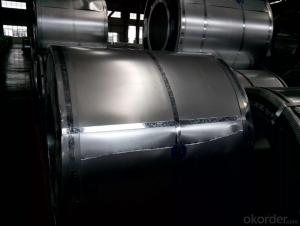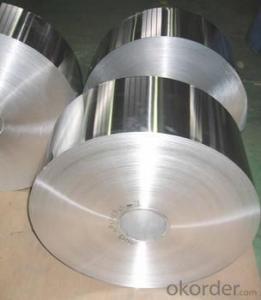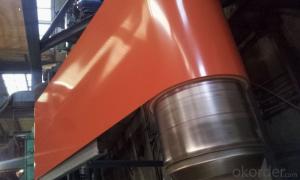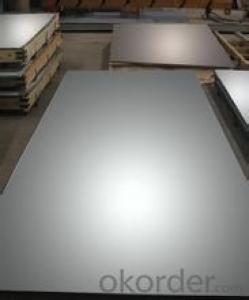The World's Best Rebar From Chines MILL
- Loading Port:
- Tianjin
- Payment Terms:
- TT OR LC
- Min Order Qty:
- 2666 m.t.
- Supply Capability:
- 5000 m.t./month
OKorder Service Pledge
OKorder Financial Service
You Might Also Like
1.Structure of Wire Rod Steel for Construction Description
the wire rod steel for construction that we offer have been used in civil construction work for years.
2.Main Features of the Wire Rod Steel for Construction
fasteners, bolts, rivets, screws,
general purpose wires,
electrode wires, industrial wires, agriculture wires,
bush wires, chain rivet wires,
detonator wire,
Umbrella ribs, upholstery wires, cycle spokes, needle wires, heald wires, staple pin Wire, safety pin wires
ACSR wires, earth wires,
tyre and hose reinforcement wires,
prestressed concrete wire, springs and rope wires,
card clothing wires,
vineyard wires,
ball bearing quality
Automobile parts like screw, fasteners, bush, spline, socket, connecting rod, shaft, gear, rivets, engine shaft, connecting rod, spindles, gears, etc.
3.Wire Rod Steel for Construction Images
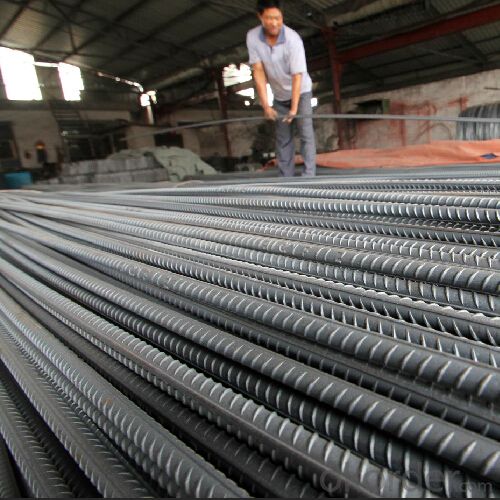


4.Wire Rod Steel for Construction Specification
Grade | Chemical Composition(%) | |||||
C | Mn | Si | S | P | B | |
SAE1006B | 0.03~O.07 | ≤0.32 | ≤0.30 | ≤0.045 | ≤0.040 | >0.0008 |
Mechanical properties | ||||||
Yield strength(N/mm2) | Tensile strength(N/mm2) | Elongation(%) | ||||
250-280 | 350-380 | ≥32 | ||||
Grade | Chemical Composition(%) | |||||
C | Mn | Si | S | P | B | |
SAE1008B | 0.10max | 0.3~O.50 | 0.15max | 0.050max | 0.040 max | 0.0008 min |
Mechanical properties | ||||||
Yield strength(N/mm2) | Tensile strength(N/mm2) | Elongation(%) | ||||
≥195 | 315-430 | ≥30 | ||||
5.FAQ of Wire Rod Steel for Construction
1.What is your minimum order quantity ?
Our MOQ is 500mt .
2.Please tell me the daily output and wire rod mill’s brand ?
Our daily output is 4000mt/day and our rolling mill from Germany’s SMS MEER
3.Which countries are your main sales?
Thanks to the professional international trade team, solid distribution channel and long – term cooperation customers, our market share in overseas realizes a tremendous growth, now we already became a main player in Middle East and South East Asia. Meanwhile, we are also the biggest supplier of Pre-painted galvanized steel coil in Philippines, Saudi Arabia, United Arab Emirates, Iran, Sudan etc.
- Q:How are steel strips coated for protection?
- Steel strips are coated for protection through a process called galvanization. Galvanization involves applying a layer of zinc to the surface of the steel strips. This is done by either hot-dip galvanizing or electroplating. In hot-dip galvanizing, the steel strips are immersed in a bath of molten zinc at a temperature of around 450°C (842°F). The zinc reacts with the steel, forming a protective layer of zinc-iron alloy on the surface. This layer provides excellent corrosion resistance and protects the steel from rusting. Electroplating, on the other hand, involves immersing the steel strips in an electrolyte solution containing zinc ions. A direct electric current is then passed through the solution, causing the zinc ions to bond with the steel surface. This creates a thin but durable layer of zinc coating that safeguards the steel from corrosion. Both hot-dip galvanizing and electroplating provide effective protection for steel strips. The zinc coating acts as a barrier, preventing moisture and corrosive elements from reaching the steel surface. Additionally, even if the coating gets scratched or damaged, the sacrificial properties of zinc ensure that it corrodes first, protecting the underlying steel. Overall, steel strips are coated for protection using galvanization techniques, which involve the application of a zinc layer. This process significantly enhances the durability and longevity of the steel, making it more resistant to corrosion and extending its lifespan.
- Q:How are steel strips used in the production of automotive body panels?
- Steel strips, typically made of high-strength steel, are indispensable in the production of automotive body panels. These strips serve to impart structural integrity and durability to the vehicle's body panels. When it comes to automotive body panel production, steel strips are primarily utilized in the construction of the vehicle's frame. These strips are precisely cut into specific lengths and shapes, and then welded or joined together to form the frame structure. This frame acts as the backbone of the vehicle, providing support and stability to the other body panels. Additionally, steel strips are also employed in the fabrication of outer body panels, including doors, fenders, hoods, and roofs. Specialized machinery is used to stamp or press these panels from the steel strips. This allows for precise shaping and forming of the body panels, ensuring a seamless fit and adherence to the desired design specifications. Furthermore, steel strips contribute to the overall safety and crashworthiness of the vehicle. In critical areas of the body panels, such as the front and rear sections, high-strength steel strips are utilized to effectively absorb and distribute impact energy during a collision. This reduces the risk of injury to occupants and helps maintain the integrity of the passenger compartment. Moreover, steel strips are selected for their excellent corrosion resistance properties, which is crucial for automotive body panels exposed to varying environmental conditions. To prevent rust and enhance their lifespan, the steel strips are often coated with protective layers or treated with anti-corrosion agents. In conclusion, steel strips are of utmost importance in the production of automotive body panels as they provide structural support, shaping capabilities, crashworthiness, and corrosion resistance. They are a key component in the manufacturing of vehicles that meet safety standards, offer durability, and maintain pleasing aesthetics.
- Q:What is the difference between carbon steel and stainless steel strips?
- Carbon steel and stainless steel strips differ primarily in their composition and corrosion resistance. Carbon steel contains a higher amount of carbon, which enhances its strength and hardness. It is more affordable and commonly used for applications that require toughness, such as construction and machinery. Stainless steel, on the other hand, incorporates a higher level of chromium, which provides excellent corrosion resistance. Due to its ability to resist rust and staining, stainless steel strips are suitable for applications in food processing, medical equipment, and chemical industries.
- Q:What is the yield strength of steel strips?
- The yield strength of steel strips varies depending on the specific grade and composition of the steel. Generally, steel strips have a yield strength ranging from 30,000 to 100,000 pounds per square inch (psi).
- Q:How are steel strips used in the production of wire and cable?
- Steel strips serve as a vital core material in the manufacturing of wire and cable. These strips are typically crafted from robust, high-quality steel, known for its strength and durability. They are usually thin and flat, forming a coiled or wound structure on a spool. To shape the steel strips, they undergo a manufacturing process involving the creation of a specific size and shape. This can be achieved through various methods, such as cold rolling or hot rolling. Cold rolling entails passing the steel strip through a sequence of rollers at room temperature, while hot rolling involves heating the strip before passing it through the rollers. These shaping techniques ensure that the steel strip attains the necessary dimensions and properties required for wire and cable production. After the formation of the steel strips, a protective layer of corrosion-resistant material is typically applied. This coating safeguards the steel from moisture and other environmental elements that may cause rust or deterioration. The coating may consist of different materials, including zinc, tin, or polymer-based compounds. The coated steel strips are then utilized as the core material in the manufacturing of wire and cable. They are commonly positioned at the center of the wire or cable, providing structural support and strength. The steel strip core aids in maintaining the wire or cable's shape and resisting stretching or breaking when subjected to tension. Moreover, the steel strips contribute to the electrical conductivity of the wire or cable. Steel possesses excellent conductivity, and the presence of a steel strip core can enhance the overall conductivity of the wire or cable. In summary, steel strips play a critical role in the production of wire and cable by offering strength, durability, and electrical conductivity to the final product.
- Q:How are steel strips tempered for increased hardness?
- Heat treatment is a process used to increase the hardness of steel strips by tempering them. This process involves subjecting the strips to controlled heating and cooling cycles, which alter their microstructure and strengthen the material. To begin, the strips are heated to a specific temperature called the austenitizing temperature. This temperature varies depending on the type of steel and the desired hardness. The strips are then held at this temperature for a certain period of time to ensure even distribution of heat. After the austenitizing process, the strips are rapidly cooled, a process known as quenching. Quenching can be done using different methods such as oil, water, or air, depending on the desired properties of the final product. The rapid cooling transforms the microstructure of the steel, resulting in increased hardness. Following quenching, the strips are tempered. Tempering involves reheating the steel to a lower temperature, typically between 300-700 degrees Celsius (572-1292 degrees Fahrenheit), for a specific duration. This step is crucial as it relieves internal stresses caused by quenching and further modifies the microstructure. The tempering temperature and duration are carefully chosen to achieve the desired hardness and toughness. Higher tempering temperatures result in lower hardness but increased toughness, while lower tempering temperatures lead to higher hardness but reduced toughness. In conclusion, increasing the hardness of steel strips through tempering involves controlled heating, rapid cooling through quenching, and subsequent tempering at specific temperatures. By manipulating the steel's microstructure, the desired hardness can be achieved, making the strips suitable for applications requiring strength and durability.
- Q:Can steel strips be used in railway tracks?
- Yes, steel strips can be used in railway tracks.
- Q:What is a steel strip?
- A steel strip is a flat and thin piece of steel that is typically produced through a process called hot rolling or cold rolling. It is formed by passing a heated or cooled steel billet through a series of rollers, which gradually reduce its thickness and shape it into a long and narrow strip. Steel strips are commonly used in various industrial applications due to their strength, durability, and versatility. They can be found in products such as automotive parts, construction materials, electrical appliances, and packaging materials. The strip's width can vary based on its intended use, and it can also be further processed or treated to enhance certain properties or achieve specific characteristics, such as surface finish, hardness, or corrosion resistance. Overall, steel strips are essential components in many manufacturing processes and play a crucial role in numerous industries.
- Q:Can steel strips be recycled after use?
- Yes, steel strips can be recycled after use. Steel is one of the most recycled materials in the world due to its durability and high recyclability. When steel strips are no longer needed or reach the end of their useful life, they can be collected and sent to a recycling facility. The recycling process begins with sorting and separating the steel strips from other materials. The strips are then cleaned to remove any contaminants. After cleaning, the steel strips are shredded into smaller pieces and melted down in a furnace. The molten steel is then cast into new steel products or rolled into new steel strips. Recycling steel strips has several benefits. Firstly, it helps conserve natural resources as it reduces the need for mining iron ore, the primary raw material used in steel production. Additionally, recycling steel helps save energy as the production of recycled steel requires less energy compared to producing steel from scratch. Recycling steel also helps reduce greenhouse gas emissions and air pollution associated with steel production. Moreover, the recycled steel retains its inherent properties, making it just as strong and durable as virgin steel. This means that the recycled steel strips can be used for similar applications as their original counterparts, such as in construction, automotive, and manufacturing industries. In conclusion, steel strips can indeed be recycled after use. Recycling steel strips promotes environmental sustainability, conserves resources, saves energy, and reduces pollution. It is an important practice that contributes to a circular economy and should be encouraged to minimize waste and maximize the lifespan of steel materials.
- Q:Can steel strips be used in automotive body panels?
- Yes, steel strips can be used in automotive body panels. Steel is a common material used in the automotive industry due to its strength, durability, and cost-effectiveness. It provides sufficient structural integrity to the body panels, ensuring safety and protection for the vehicle and its occupants. Additionally, steel strips can be easily formed and shaped, making them suitable for various body panel designs.
1. Manufacturer Overview |
|
|---|---|
| Location | |
| Year Established | |
| Annual Output Value | |
| Main Markets | |
| Company Certifications | |
2. Manufacturer Certificates |
|
|---|---|
| a) Certification Name | |
| Range | |
| Reference | |
| Validity Period | |
3. Manufacturer Capability |
|
|---|---|
| a)Trade Capacity | |
| Nearest Port | |
| Export Percentage | |
| No.of Employees in Trade Department | |
| Language Spoken: | |
| b)Factory Information | |
| Factory Size: | |
| No. of Production Lines | |
| Contract Manufacturing | |
| Product Price Range | |
Send your message to us
The World's Best Rebar From Chines MILL
- Loading Port:
- Tianjin
- Payment Terms:
- TT OR LC
- Min Order Qty:
- 2666 m.t.
- Supply Capability:
- 5000 m.t./month
OKorder Service Pledge
OKorder Financial Service
Similar products
New products
Hot products
Hot Searches
Related keywords
























